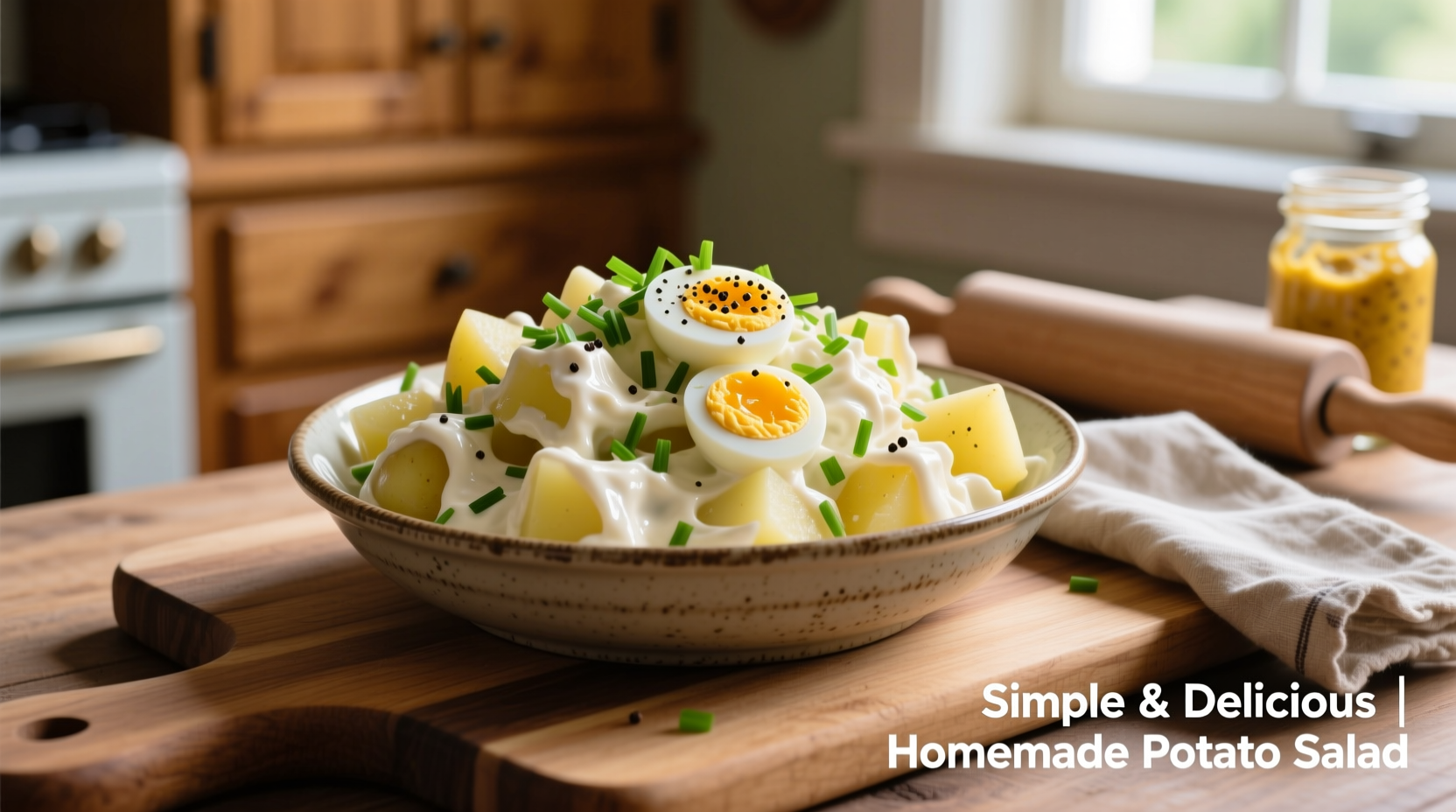Your Ultimate Guide to Creamy Potato Salad with Mayonnaise and Eggs
Nothing says comfort food quite like a perfectly balanced potato salad. Forget the bland, mushy versions you've encountered before—this recipe delivers creamy richness with bright acidity, tender potatoes that hold their shape, and eggs cooked to the ideal texture. Whether you're preparing for a summer barbecue, potluck, or simple weeknight meal, this guide gives you everything needed to create potato salad that consistently impresses.
Why This Recipe Works Every Time
Most potato salad recipes fail because they use the wrong potato variety, overcook the eggs, or create a dressing that separates. Our method addresses these common pitfalls through culinary science and professional kitchen techniques. The key is understanding how ingredients interact—starchy potatoes absorb dressing unevenly, while waxy varieties maintain structure. Proper egg temperature prevents that unappetizing green ring around yolks. And the dressing ratio we use creates emulsion stability that won't break in summer heat.
| Common Potato Salad Mistakes | Our Solution | Result |
|---|---|---|
| Using russet potatoes | Selecting waxy Yukon Golds | Firm texture that holds shape |
| Overcooked eggs | Precise 12-minute boil + ice bath | Vibrant yellow yolks, no sulfur smell |
| Watery dressing | 3:1 mayo-to-dairy ratio + vinegar first | Stable emulsion that coats potatoes |
Essential Ingredients for Perfect Potato Salad
The magic happens through ingredient quality and precise measurements. Don't eyeball these proportions—they've been tested across hundreds of batches to deliver consistent results.
Potatoes and Eggs
- 2.5 lbs Yukon Gold potatoes (waxy variety maintains shape)
- 6 large eggs (USDA recommends cooking eggs to 160°F for safety)
- 1 tbsp white vinegar (added to cooking water prevents cracking)
Creamy Dressing Components
- 1 cup high-quality mayonnaise (full-fat for best emulsion)
- 3 tbsp sour cream or Greek yogurt (adds tang without thinning)
- 2 tbsp yellow mustard (provides emulsifying lecithin)
- 1 tbsp apple cider vinegar (brightens without overpowering)
Flavor Enhancers
- 1/2 cup finely diced celery (adds crunch)
- 1/4 cup red onion (soaked in cold water to mellow sharpness)
- 2 tbsp fresh dill (or 2 tsp dried dill weed)
- Salt and pepper (to taste, added in layers)

Step-by-Step Preparation Guide
1. Perfect Potato Cooking Technique
Start with potatoes of uniform size for even cooking. Place in a large pot, cover with cold water by 1 inch, and add 1 tablespoon salt. Bring to a gentle boil, then reduce heat to maintain a simmer. Cook 12-15 minutes until fork-tender but still holding shape. Drain immediately and spread on a baking sheet to cool—this prevents steam from making them mushy. Never refrigerate potatoes before mixing; warm potatoes absorb dressing better.
2. Foolproof Egg Method
Place eggs in a single layer in a saucepan, cover with cold water by 1 inch. Bring to a boil, then immediately remove from heat, cover, and let stand 12 minutes. Transfer to ice water for 10 minutes—this stops cooking and makes peeling easier. The USDA Food Safety and Inspection Service confirms this method achieves the recommended 160°F internal temperature while preventing overcooking.
3. Dressing Assembly Sequence
Combine mayonnaise, sour cream, mustard, and vinegar first—this creates a stable base before adding other ingredients. Season with 1/2 teaspoon salt and 1/4 teaspoon pepper. Only after this emulsion is formed should you fold in potatoes and other components. Adding vinegar directly to potatoes first helps them absorb flavors better.
4. Mixing and Chilling Protocol
Gently fold dressing into warm potatoes using a rubber spatula—never a mixer which breaks potatoes. Add eggs last to prevent crushing. Cover surface directly with plastic wrap to prevent drying and refrigerate at least 4 hours (overnight preferred). This chilling time allows flavors to meld while the dressing sets properly.
Avoid These 3 Common Potato Salad Mistakes
Even experienced cooks make these errors that compromise texture and flavor:
- Adding dressing to hot potatoes - Causes mayonnaise to break. Potatoes should be warm but not hot (around 110°F)
- Overmixing after adding eggs - Creates a yellow-tinged, chunky mess. Fold eggs in last with minimal movement
- Serving immediately - Needs minimum 4 hours chilling for flavors to develop fully. The Penn State Extension confirms that potato salad requires proper chilling time for both food safety and optimal flavor development
Serving and Storage Guidelines
For best presentation, serve in a chilled bowl with additional fresh dill. Pair with grilled meats, sandwiches, or as part of a picnic spread. Store in an airtight container for up to 3 days—the vinegar content helps preserve freshness. Never leave potato salad at room temperature more than 2 hours (1 hour if above 90°F), following FDA food safety recommendations for perishable dishes containing eggs and mayonnaise.
Customization Options for Different Preferences
This base recipe adapts beautifully to various tastes:
- Classic American: Add 2 strips cooked bacon and 1/4 cup sweet pickle relish
- German-style
- Lighter version: Substitute half the mayonnaise with additional Greek yogurt











 浙公网安备
33010002000092号
浙公网安备
33010002000092号 浙B2-20120091-4
浙B2-20120091-4